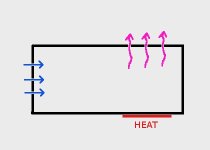snakewispera snr
The Devils Advocate
I've been wondering long and hard over the last couple of weeks, concerning RI's...
We see RI's occur occasionally on the forums, where people are asking advice on what to do.... They all claim to keep their snakes in ideal conditions and I haven't any reason to disbelieve them.....What has got me wondering is....
The snakes that escape and are found weeks or even months later (even in the UK...People come in the shop for us to look them over when found) all seem fine and I've never seen or heard any evidence of an RI.....
Now you would think a snake in the wild would have more chance of getting it than one in a perfect environment would.....
This is where it gets strange.....
After talking with my vet he presented me with his theory.....
Fresh faeces has to dry out.... During this process bacteria aerosol off the offending dump.... Vivs are usually moist-ish with limited air flow and the perfect environment for the bacteria to grow, so he thinks this could be the start of the problem.....
Anyone care to add/agree/disagree......
We see RI's occur occasionally on the forums, where people are asking advice on what to do.... They all claim to keep their snakes in ideal conditions and I haven't any reason to disbelieve them.....What has got me wondering is....
The snakes that escape and are found weeks or even months later (even in the UK...People come in the shop for us to look them over when found) all seem fine and I've never seen or heard any evidence of an RI.....
Now you would think a snake in the wild would have more chance of getting it than one in a perfect environment would.....
This is where it gets strange.....
After talking with my vet he presented me with his theory.....
Fresh faeces has to dry out.... During this process bacteria aerosol off the offending dump.... Vivs are usually moist-ish with limited air flow and the perfect environment for the bacteria to grow, so he thinks this could be the start of the problem.....
Anyone care to add/agree/disagree......

